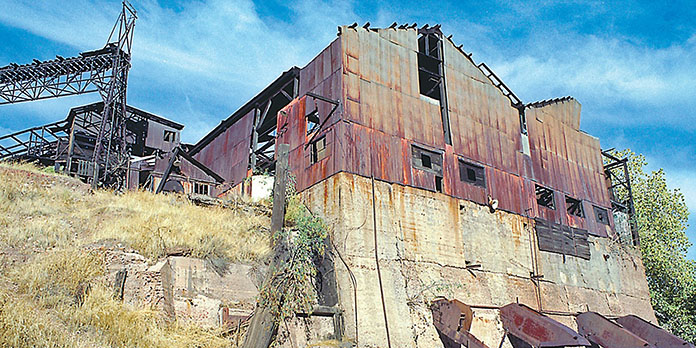The U.S. Environmental Protection Agency announced today, Dec. 13, that it has reached a settlement with Buckhorn Inc., ordering the Ohio company to study, then clean up mercury contamination at a federal Superfund site in the southeast corner of San Benito County.
The initial investigation work is expected to take over two years to complete at a cost of approximately $2 million, according to the EPA. Under the Superfund law, Buckhorn will be responsible for all costs of the investigation and eventual cleanup of the New Idria Mercury Mine, which operated from 1854 to 1972.
Contaminants from the mine site have been fouling San Carlos Creek and threatening the San Joaquin River watershed for decades.
The New Idria Mercury Mine was added to the National Priorities List by the Obama administration in September 2011. “Under the Trump Administration the Superfund program has reemerged as a priority to fulfill the Agency’s core mission of protecting human health and the environment,” the EPA said in a press release announcing the settlement.
At one point, the Idria mine was the largest operating mercury mine in the country, according to the EPA.
“The legacy of abandoned mines threatens public health and natural resources in California,” said EPA Pacific Southwest Regional Administrator Mike Stoker in a statement. “After the feasibility study is complete, EPA will select a final remedy and work toward the ultimate cleanup, protecting important waterways from mercury and other pollutants.”
Buckhorn Inc., subsidiary of Myers Industries and a reusable plastic packaging manufacturer based in Millford, Ohio, is the successor to the New Idria Mining and Chemical Company, a former owner and operator of the New Idria Mercury Mine. The mine, located 64 miles southeast of Hollister, Calif., produced over 38 million pounds of mercury in its 118-year history.
Under the agreement, Buckhorn is to investigate the extent of contamination at the abandoned mine to identify potential human health and environmental risks. The results will become the basis of a feasibility study with options for cleaning up the site under EPA oversight.
Operations at the New Idria Mercury Mine deposited between 0.5 and 2 million tons of waste rock, calcines, and tailings covering more than 40 acres at the site.
EPA said it and Buckhorn have taken recent steps to minimize release of contaminants from the site, but added that in a statement that years of mercury pollution and mine drainage have contaminated San Carlos Creek and its sediments with levels of mercury toxic to aquatic organisms. During periods of heavy precipitation, floodwaters wash these contaminated sediments downstream where they may reach the Mendota Pool and San Joaquin River, which flows into San Francisco Bay.
Mercury, especially in the form of methylmercury, is highly toxic and bioaccumulates in living organisms. Methylmercury is an organic mercury compound created by microbes in aquatic systems such as creeks and wetlands and is known to build up in the sediments, posing a threat to fish and other wildlife. People who eat contaminated fish or other contaminated wildlife are at risk of mercury poisoning, which can damage people’s nervous systems and harm the brain, heart, kidneys, lungs and immune system.
For more information on the New Idria Mercury Mine Superfund Site, please visit: www.epa.gov/superfund/newidria.










